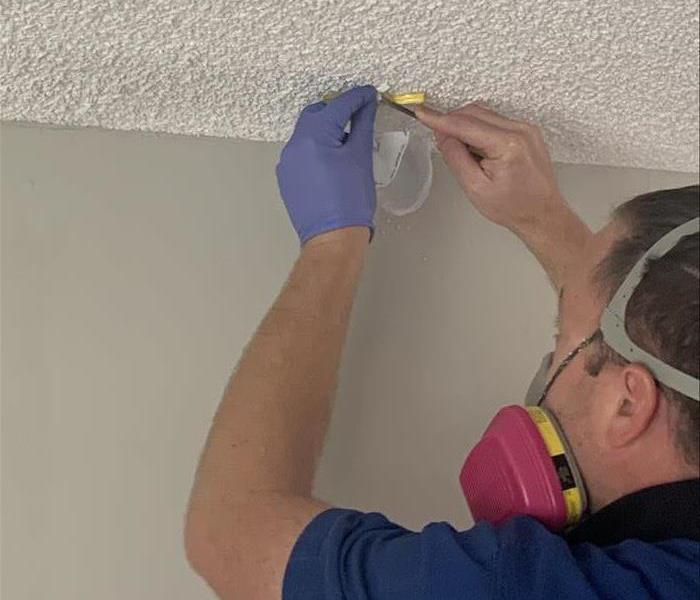What is asbestos?
5/14/2021 (Permalink)
What is asbestos?
Asbestos is a natural mineral product that's resistant to heat and corrosion. It was used extensively in the past in products such as insulation, cement and some floor tiles. Most peoples homes with asbestosis acquired it on the job before the federal government began regulating the use of asbestos and asbestos products in the 1970s. Today, its handling is strictly regulated. Although in most cases, materials containing asbestos are fairly inert and won't release asbestos fibers into the air unless disturbed, during reconstruction or renovation this will happen. So it’s crucial to test for asbestos prior to any demolition. The materials containing asbestos will need to be removed by a specialist. Otherwise, the microscopic fibrils in asbestos are so abrasive once broken down that, if inhaled, they can cause health effects.
Testing for asbestos
Because asbestos can’t be seen with the naked eye, materials must be submitted to laboratory certified by the Environmental Protection Agency (EPA) for testing prior to a remodel. Even removing a sample to send to the EPA requires stringent precautions, and in many states it’s illegal to do sample removal yourself. To test building materials for asbestos, different methods are employed. Polarized Light Microscopy (PLM) is the most frequently used technique for this category of materials. This technique uses the unique properties of polarized light to analyze mineral-specific properties in fibers, allowing researchers to:
- Identify asbestos particles as well as the various species of asbestos particles that exist.
- PLM tests show the percentage of asbestos within a certain material after analysis.
Companies such as Dynamic Environmental Services, Inc are certified asbestos consultants (CAC) who can aid in the prevention, control, or can act as your governmental agency liason.
Safe Removal & Transport of Environmental Contaminants
Asbestos abatement removal, repair and encapsulation of materials or products in a structure is handled by a professional asbestos abatement company in alignment with Occupational Safety and Health Administration (OSHA) and Environmental Protection Agency (EPA) licensing.
SITE PREPARATIONS
- Work area established
- HVAC and electrical systems disabled.
- New electrical system installed to power negative air pressure units that avoid contamination of air outside work area.
- Decontamination enclosure systems installed.
- Seal openings with plastic sheeting and duct tape.
- Wet wipe or use a vacuum with a HEPA (high-efficiency particulate air) filter on non-movable objects to keep asbestos from becoming airborne.
- Seal immobile items with plastic sheeting and duct tape.
- Cover surface not getting abated with plastic sheeting.
- Clean up using a HEPA vacuum.
- Disposal requires asbestos-containing waste be sealed in leak-tight containers while still wet, then labeled clearly and taken to qualified landfills that have specific requirements for securing the waste and preventing fibers from escaping into the air.
- Vehicles that transport the waste to the landfill have specific requirements and labeling instructions.
Companies such as Burns Environmental Services offers a comprehensive range of asbestos removal services, to meet abatement and regulatory obligations in the most efficient and cost effective manner.





 24/7 Emergency Service
24/7 Emergency Service
